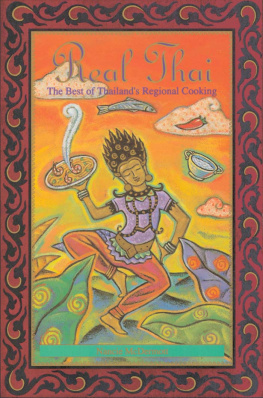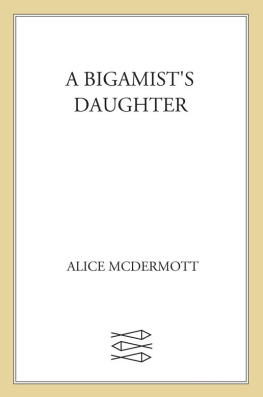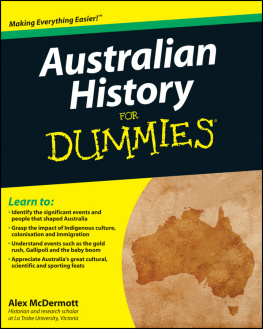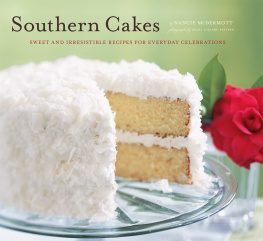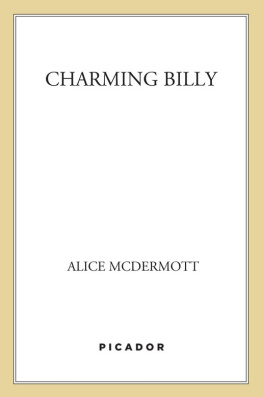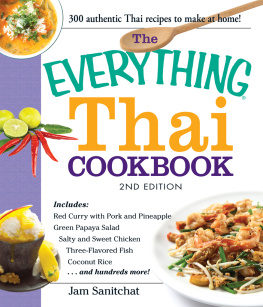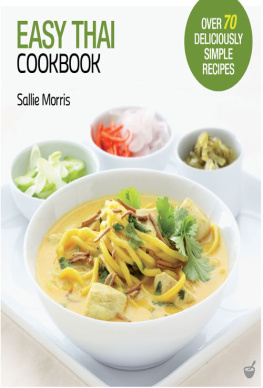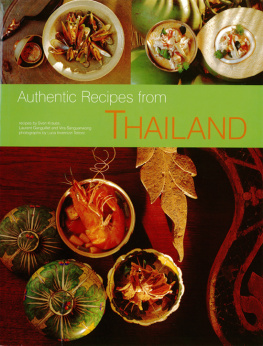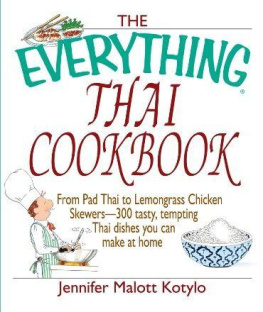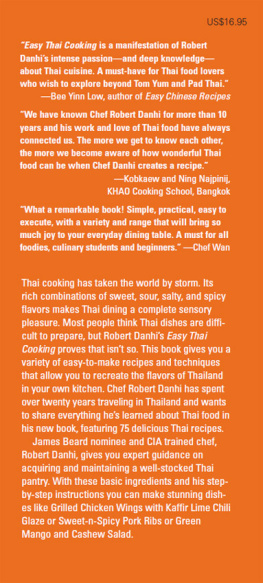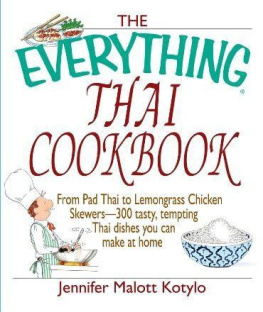I first went to Thailand in 1975, to spend two years working as a Peace Corps volunteer. My assignment was to teach English as a second language in a secondary school in the small town of Thatoom, on the Moon River in Surin Province. Surin, which borders on Cambodia, is about 360 miles from Bangkok, in the northeastern region of Thailand known as Pahk Issahn.
The students were eighth and ninth graders at Thatoom Prachasermwit, a comprehensive school participating in a World Bank program designed to increase educational opportunities in rural communities. I arrived in Thailand in April, but before I could begin teaching others, I went through three months of training that included practice teaching and intensive instruction in the beautiful, baffling tonal language of Thailand. Thirty of us lived in up-country hotels, first in the central Thai city of Nakorn Sawahn and later in the northernmost province of Chiang Rai.
Our days were spent in classrooms, and our evenings were devoted to language tutoring and CCT-cross-cultural training-a valiant effort on the part of our American and Thai training staff to acquaint us with Thai life. It touched on everything from politics and religion to table manners and how to sing a Thai song. April is the pinnacle of summertime in Thailand, and the heat was astounding, even for me, a veteran of twenty-three humid North Carolina summers. Frequent cold showers, a fresh dusting of baby powder, and a change of clothes gave a little relief, but a better remedy was a succession of very cold drinks. Small cafes near the hotel introduced me to Thai iced coffee and tea, concoctions so sweet, strong, and cold that I gladly lingered over the damp glass. In the evening, groups of us strolled to the night market in search of heavenly banana smoothies called gluay bahn.
Back home in North Carolina I had been raised to believe that there were times when it was just too hot to eat, but Thais have no such silly notions. They know its always time to eat, and they take tremedous pleasure in fixing or finding the perfect treat for a given moment. Despite the soaring mercury, I eagerly expanded the repertoire of dishes I could pronounce well enough to order. First it was kao paht, fried rice seasoned with a squeeze of fresh lime. Then kwaytiow, soft, fresh rice noodles, a verbal challenge but worth mastering for the wealth of delicious ways the noodles are prepared. There is kwaytiow paht si-yu, stir-fried with beef, soy sauce, Chinese broccoli, and egg; kwaytiow laht nah, smothered in a delicious Cantonese-style gravy with beef, Chinese broccoli, and brown bean sauce; and best of all, kwaytiow paht Thai, stir-fried Thai style with garlic, tamarind, peanuts and chilies and served with cool, crunchy bean sprouts and a chunks of lime.
Kwaytiow nahm, meatballs with fat rice noodles in chicken soup, was my lesson in acquired tastes. Thai cooks toss in a handful of fresh cilantro just before serving, so that the aroma and flavor of this distinctive herb permeate the dish. Although I prided myself on being a brave and adventurous diner, I didnt like cilantro at all, and along with a few others timid eaters, sheepishly requested instruction in how to convey Hold the cilantro! to a Thai noodle chef. Mai sai pahk chee! our saintly language instructors taught us, convinced that we were indeed insane. And that is what I said for months, until little by little I began to like cilantro, and long after language training was over, found myself using a new phrase-Sai pahk chee yuh-yaeh! Make mine heavy on the cilantro!
By the time the three months of training were over and I went to my school in Surin, I had added dozens of dishes to my list and was beginning to understand a little about Thai food.
The cuisines of China and India are colorful threads woven into the tapestry of Thai cuisine. Chinese influence is quickly apparent in the vast numbers of noodle dishes beloved in Thailand, often unchanged from the way they are prepared in Chinese communities around the world. Noodles are a one-dish meal, especially popular for lunch and even breakfast, and they are about the only food that Thais do not share at the table. Doctoring ones plate of paht Thai or bowl of kwaytiow nahm is serious business for Thai diners, who have strong ideas about how much krueng broong, or seasonings, to add. Fish sauce, chili-vinegar sauce, ground peanuts, sugar, lime, and crushed dried red chili are on every noodle-shop table, and I think Im the only one who ever dug right into my plate of noodles, perfectly delighted with it the way it came. Thais first add two tablespoons of this and a bit of that, tossing everything until it suits their tastes. Noodle shops gave me my first intimation of how seriously these lighthearted people take food, not in a heavy, pedantic way, but in the sense of being devoted to getting the flavors just the way they like them to be.
Being of Chinese origin, noodles are also about the only food Thais eat with chopsticks. Most other dishes are enjoyed with a large spoon to catch the sauce and a fork in the other hand to help mix it in with the rice. Thais eat from the spoon, using the fork only for mixing and pushing bites of food onto the spoon.
Other Chinese legacies include extensive use of the techniques of stir-frying and steaming, although Thai stir-fries tend to be less complicated than their Chinese counterparts. In the Thai kitchen, there is little fuss over cutting ingredients to a precise size and shape, and cooks seldom marinate meat with seasonings or use cornstarch to thicken and glaze sauces. Chinese-style dishes that have a solid home in Thailand include moo paht brow wahn, pork with vegetables in sweet-sour sauce; gai paht meht mamuang himapabn, chicken with cashews; moo phat king, pork with mushrooms and fresh ginger; and kao mun gai, Hainan-style chicken and rice.
Thailands Indian heritage is strongest in the brilliant use of spices and herbs. Thai curry pastes are descendants of the wet masalas of India, in which fresh herbs and roots are ground with dried toasted spices to create aromatic seasoning pastes. An affection for chilies, coconut milk, tamarind, ginger, and cilantro is shared between the two countries, as is the style of cooking rice so that it comes out in fluffy separate grains. Rice is always eaten from a plate, using either the right hand or a spoon, rather than from a rice bowl with chopsticks.
Thailand has five regions with distinct geographical and cultural differences. This book devotes a chapter to each region: the Center, the North, the South, the Northeast, and the Gulf Coast. These are followed by a chapter of basic recipes and a glossary.
Each regional chapter opens with an introduction to acquaint you with the land, its people, and the food that sustains them in their daily lives. The basic recipes chapter contains recipes for dishes used throughout the book: rice, curry pastes, sauces, and the techniques for making less familiar ingredients such as tamarind liquid, roasted rice powder, and fresh coconut milk. Many of these basic preparations can be purchased in Asian markets if you are short on time, so check the glossary for additional information.
The glossary defines many of the ingredients used in this book, so look there whenever you encounter an unfamiliar one, or simply want to know more about one you already use in your kitchen. It includes descriptions of each ingredient to help you recognize it in Asian markets and explains how it is used and stored. Each entry also lists other names by which these ingredients are widely known, and suggests substitutions for them whenever possible.

